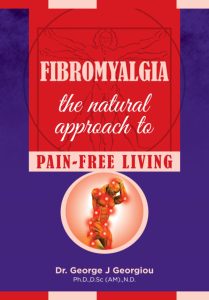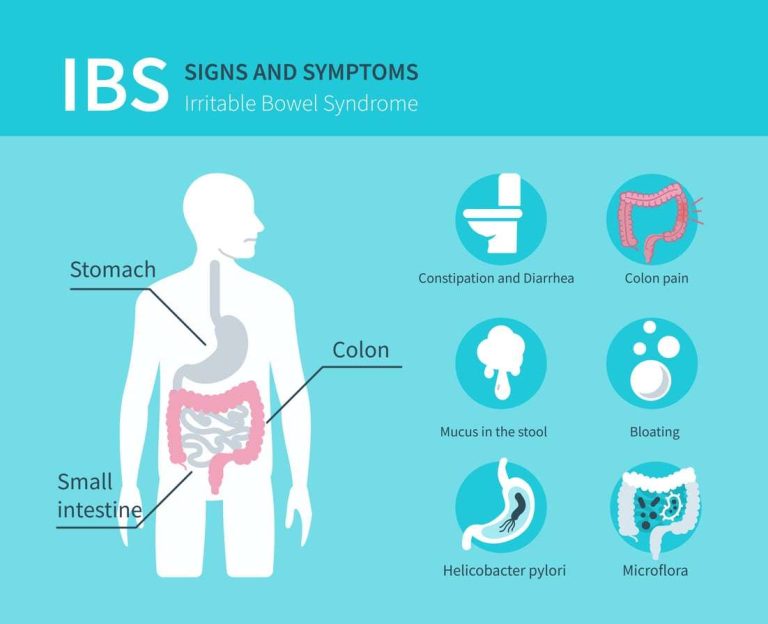Why Do We Need Supplements – Part 2
Hidden Dangers in the Food Supply
Part I of Why We Need Supplements examined farming and environmental factors that contribute to mineral deficient soils, and the role these play in diseases such as cancer. Part I also examined the variables of nutrient bioavailability, including sources, forms, and amounts of nutrients required for health, as well as at nutrient losses due to cooking, freezing and canning of fresh foods.Food irradiation subjects foods to gamma rays from nuclear materials, electrons from electron guns, and x-rays. By 1988, irradiated foods were already being sold in more than twenty countries. Red meat, chicken, and vegetables have since appeared on the shelves of some U.S. supermarkets.(26)Spices are among the first foods to be irradiated, and have been widely available for years. In addition, pharmaceutical companies are now regularly sterilizing drugs with ionizing radiation.(27) Because irradiated foods served in restaurants and in schools are not labeled on the menu, no one knows for certain how much has entered the market.
In theory, food irradiation can preserve foods, kill parasites and some bacteria, inhibit sprouting, and delay ripening. There are, however, as many studies indicating the dangers of irradiated food as there are studies proclaiming its safety. Irradiation of food decreases the content of antioxidants such as vitamins A, E, C, and K, probably due to the free radicals generated.(28-29) Individuals who consume raw fruits and vegetables to derive the highest vitamin content possible will essentially be consuming the nutritional equivalent of a blanched or canned vegetable.
Animal studies supporting food irradiation have been methodologically flawed, conducted using animals fed both irradiated food and vitamins shown to be depleted after irradiation. One group of researchers purposely fed mice vitamins and irradiated food separately, since irradiation destroys fat soluble vitamins even when additional amounts of those vitamins are added to foods prior to undergoing irradiation.(28,30-32) Furthermore, animals consuming irradiated food have experienced chromosomal abnormalities and detrimental changes in the kidney and blood vessels.(33-35)
In humans, a 1970’s study looked at the effects of feeding irradiated and unirradiated foods to malnourished children in India. Five children were fed unirradiated wheat, five freshly irradiated wheat, and five ate irradiated wheat stored for 12 weeks. Children who had eaten freshly irradiated wheat had unusually high rates of chromosomal and cellular abnormalities in their blood after six weeks: 1.8 percent and 3.8 percent respectively. These changes were non-existent in the control group.
At six weeks, the group fed stored irradiated wheat experienced 0.6 percent chromosomal abnormalities and 0.8 percent cellular abnormalities. The researchers fail to point out that the small 0.8 percent incidence of abnormalities is identical to the percentage experienced during the fourth week in the subjects fed freshly irradiated wheat. This could indicate that longer feeding of stored irradiated wheat, such as exposure over years or a lifetime, could generate additional mutations.(36)
A larger study of 70 healthy subjects was conducted in China. Subjects receiving irradiated foods stored for an extended period, as well as the control group (who ate unirradiated wheat), showed increases in chromosomal abnormalities, which were increased slightly in the irradiated food group.(37)
The gradually increased availability of irradiated food–much of it poorly labelled or disguised in meals offered in restaurants, airplanes, and schools–suggests that supplements may become even more necessary to replace nutrients depleted in the food supply or to guard against potential health risks.
GENETICALLY MODIFIED FOOD
In 1998, 30 million acres of the corn, cotton, and potatoes planted in the United States were genetically engineered to produce a naturally-occurring pesticide toxic only to target insects. These crops now have entered the food supply.(38)
Despite the assertion that genetically modified foods are safe, very little research exists on their risks and benefits. One researcher pointed out in the June 2000 issue of Science that the majority of citations on Internet databases, such as Medline, were opinions and comments about genetically modified food. These citations, he said, ‘were not based on experimental data.'(39)
One concern revolves around an investigation by Dr. Pusztai, a respected researcher at the Rowett Research Institute in Scotland. Pusztai focused on the safety of potatoes engineered to express a naturally-occurring insecticide, lectin, normally found in the snowdrop plant. Rats fed the genetically modified potatoes experienced significant reductions in the weights of the intestine, pancreas, kidneys, liver, lungs, and brain. Immunity was reduced in the animals treated with the genetically engineered potatoes, intestinal infections increased.(40)
Proponents of genetically engineered food maintain that the foreign DNA injected into the transgenic plants is harmless. Yet, studies indicate that foreign DNA is incorporated into animals through oral ingestion and absorption in the gastrointestinal tract. Researchers found that fragments of foreign DNA fed to mice passed through the intestinal wall and took up residence in the peripheral white blood cells, in B cells, T cells, and macrophages from the spleen, and in liver cells. Even more shocking was the finding that food-ingested foreign DNA can become linked to mouse DNA. Furthermore, when foreign DNA is fed to pregnant mice it can be detected in some cells in various organs of the fetuses and of newborn animals.(41-43)
Research does not exist to conclusively determine the human health risk of long-term consumption of genetically modified food. No one can predict for certain the health impacts of these man-made foods.
TAINTED MEAT
Surprising studies have emerged that suggest mad cow disease, technically known as bovine spongiform encephalopathy may be far more prevalent than previously thought. In fact, researchers have discovered that the human equivalent of mad cow disease, called Creutzfeldt-Jakob Disease (CJD) may already exist in nearly everyone’s bodies.
Creutzfeldt-Jakob disease (CJD) is a subacute spongiform encephalopathy (SSE) characterized by a variety of neurologic signs, including dementia and muscle twitching. Many researchers believe an abnormal protein called a prion is responsible for this ultimately fatal condition. Once an abnormal prion comes in contact with a normal protein in a nerve cell, it forces the healthy protein to mutate. This destructive process eventually turns the brain into a spongy mass.
While prions cannot be killed by heat, radiation, or disinfectants, researchers have reduced infectivity of the disease by 99.5 percent with guanidine hydrochloride and guanidine thiocyanate.(44-45) Researchers have yet to investigate whether the guanidine found in the herb goat’s rue (in VRP’s GluControl) can accomplish the same inhibition, but the possibility is an intriguing one.
The diet is, in all likelihood, the major pathway CJD uses to jump from host to host. In one study of 26 CJD patients, researchers noted an increased consumption of roast pork, ham, hot dogs, roast lamb, pork chops, smoked pork, scrapple, rare meat, raw oysters and clams, and liver.(46) Recently, chronic wasting disease, a condition identical to mad cow disease, has been found in deer in Colorado and Wyoming and on game ranches in Montana and Oklahoma. A little girl who consumed venison and two young hunters who prepared and handled a deer carcass all contracted CJD. According to researchers, CJD also has been transmitted by contaminated EEG electrodes and neurosurgical instruments.(47)
The theory that CJD is transmitted via the food chain was further confirmed in 1996, when a new variant of CJD (nvCJD) was reported in adolescents and young adults in Great Britain, an age group not normally affected with the original form of CJD. Researchers have demonstrated that the transmissible agent responsible for new variant Creutzfeldt-Jakob disease is identical to that in bovine spongiform encephalopathy, commonly known as mad cow disease.(48)
The Centers for Disease Control in Atlanta maintains that the old form of the disease, known as sporadic or chronic CJD, occurs in only one out of one million people annually. Scientific evidence suggests, however, that many physicians are misdiagnosing CJD as Alzheimer’s. One University of Pittsburgh study of 54 deceased subjects diagnosed with dementia revealed that three of the subjects actually had CJD. In a 1989 study at Yale University, researchers performed postmortem examinations of 46 patients diagnosed with Alzheimer’s. Six of the patients actually had CJD.(49-51) These studies suggest that 6-to-12 Alzheimer’s patients out of every 100 may actually have CJD. With 4 million Alzheimer’s patients in the United States, 250,000 to 500,000 Alzheimer’s patients may in reality have mad cow disease.
In one region of Slovakia, the CJD incidence is more than 1,000 fold that of the so-called ‘typical’ incidence and some of the afflicted individuals are as young as 30 years old.45 In St. Paul, Minnesota, neurologists performed autopsies on four deceased patients diagnosed during life with a slowly progressive dementia. The autopsies revealed the patients actually had CJD.(52) In 1998, researchers at the National Institutes of Health in Bethesda, Maryland published a case study of a 53-year-old man who died of sporadic CJD. Four and one half years later, this then 55-year-old widow died from CJD. Neither patient had a family history of neurologic disease.(53) Similar evidence from Japan and Australia indicates CJD may emerge as a hidden epidemic.
Other researchers made an even more startling discovery when studying healthy volunteers ages 20–30, 40–50, and 61–71 with no family history of dementia. Amazingly, a CJD-like agent appeared in most of the blood samples from all the age groups. When the samples containing this CJD-like agent were injected into hamsters, the animals developed CJD neuropathology. Surprisingly, the healthy individuals without any family history of dementia yielded more positive takes than those from subjects whose relatives had Alzheimer’s.
The researchers hypothesized that this CJD-like agent might actually be a less virulent form that can protect against the disease. Alternatively, the researchers suggested, ‘If a CJD-like variant can cause some cases of Alzheimer’s, it could function by a hit and run mechanism…or it could continuously and subliminally damage neurons by a persistent low-level infection.’ Since the sporadic form of the disease usually manifests itself in the elderly, the researchers suggested CJD may occur when immunity is reduced during aging or because of genetic susceptibility.(54-55)
CONCLUSION
The human body remains in a state of immunological balance. Supplements shown to enhance the body’s immune defences may therefore become a key factor in warding off both hidden epidemics such as CJD and more widely recognized conditions. The depletion of nutrients in the soil and the loss of vitamins, minerals and amino acids during cooking, food processing, and freezing, suggests that supplements can not only help us meet dietary nutritional needs, but also offer the doses shown in clinical studies to offer the most benefit to our health.
Taking a high-quality, high-potency multivitamin supplement daily such as HMD MULTIS is something that is highly recommended.
Read other interesting articles such as:
Prevention is Wiser than Cure!
References:
26. Mudgett R. Electromagnetic energy and food processing. J Microw Power Electromagn Energy. 1988;23(4):225-30.
27. Basly JP, Duroux JL, Bernard M. The effect of gamma radiation on the degradation of salbutamol. J Pharm Biomed Anal. 1997;15(8):1137-41.
28. Radomski JL, Deichmann WB, Austin BS, MacDonald WE, Bernal E. A study of the possible carcinogenicity of irradiated foods. Toxicology and Applied Pharma. 1965;7:122-27.
29. Dodd NJ. Free radicals and food irradiation. Biochem Soc Sym. 1995;61:247-58.
30. Irradiation in the Processing and Handling of Food. Federal Register. April 1986, p. 13376.
31. Hickman JR, McLean LA, Ley FJ. Rat feeding studies on wheat treated with gamma radiation. Food and Cosmetic Toxicology. 1964;2(2):175-80.
32. Radomski JL, et al. Chronic toxicity studies in irradiated beef stew and evaporated milk. Toxicology and Applied Pharmacology. 1965;7(1):113-21.
33. Levina AI, Ivanov AE. [Renal pathomorphology of rats fed irradiated food products over a long period]. Biul Eksp Biol Med. 1978;85(2):230-2.
34. Vijayalaxmi. Immune response in rats given irradiated wheat. Br J Nutr. 1978;40(3):535-41.
35. Vijayalaxmi. Genetic effects of feeding irradiated wheat to mice. Can J Genet Cytol. 1976;18(2):231-8.
36. Bhaskaram C, Sadasivan G. Effects of Feeding Irradiated Wheat to Malnourished Children. American J of Clin Nutr. 1975;28(2):130-35.
37. Shanghai Institute of Radiation Medicine and Shanghai Institute of Nuclear Research. Safety evaluation of 35 kinds of irradiated human foods. Chinese Medical Journal. 1987;100(9):715-18.
38. Schmidt CW. Natural born killers. Environ Health Perspect. 1998;106(9):A432-7.
39. Domingo JL. Health risks of GM foods: many opinions but few data. Science. 2000;288(5472):1748-9.
40. Ewen SW, Pusztai A. Effect of diets containing genetically modified potatoes expressing Galanthus nivalis lectin on rat small intestine. Lancet. 1999;354(9187):1353-4.
41. Doerfler W, Schubbert R. Uptake of foreign DNA from the environment: the gastrointestinal tract and the placenta as portals of entry. Wien Klin Wochenschr. 1998;110(2):40-4.
42. Schubbert R, Renz D, Schmitz B, Doerfler W. Foreign (M13) DNA ingested by mice reaches peripheral leukocytes, spleen, and liver via the intestinal wall mucosa and can be covalently linked to mouse DNA. Proc Natl Acad Sci U S A. 1997;94(3):961-6.
43. Schubbert R, Hohlweg U, Renz D, Doerfler W. On the fate of orally ingested foreign DNA in mice: chromosomal association and placental transmission to the fetus. Mol Gen Genet. 1998;259(6):569-76.
44. Weihl CC, Roos RP. Creutzfeldt-Jakob disease, new variant creutzfeldt-jakob disease, and bovine spongiform encephalopathy. Neurol Clin. 1999;17(4):835-59.
45. Manuelidis L, Sklaviadis T, Akowitz A, Fritch W. Viral particles are required for infection in neurodegenerative Creutzfeldt-Jakob disease. Proc Natl Acad Sci U S A. 1995;92(11):5124-8.
46. Davanipour Z, Alter M, Sobel E, Asher DM, Gajdusek DC. A case-control study of Creutzfeldt-Jakob disease. Dietary risk factors. Am J Epidemiol. 1985;122(3):443-51.
47. Brown P. The risk of blood-borne Creutzfeldt–Jakob disease. Dev Biol Stand. 2000;102:53-9.
48. Ironside JW. Neuropathological findings in new variant CJD and experimental transmission of BSE. FEMS Immunol Med Microbiol. 1998;21(2):91-5.
49. Boller F, Lopez OL, Moossy J. Diagnosis of dementia: clinicopathologic correlations. Neurology. 1989;39(1):76-9.
50. Manuelidis L, Manuelidis EE. Creutzfeldt-Jakob disease and dementias. Microb Pathog. 1989;7(3):157-64.
51. Manuelidis L, Murdoch G, Manuelidis EE. Potential involvement of retroviral elements in human dementias. Ciba Found Symp. 1988;135:117-34.
52. Mendez MF, Selwood A, Frey WH 2nd. Clinical characteristics of chronic Creutzfeldt-Jakob disease. J Geriatr Psychiatry Neurol. 1994;7(4):206-8.
53. Brown P, Cervenakova L, McShane L, Goldfarb LG, Bishop K, Bastian F, Kirkpatrick J, Piccardo P, Ghetti B, Gajdusek DC. Creutzfeldt-Jakob disease in a husband and wife. Neurology. 1998;50(3):684-8.
54. Manuelidis EE, de Figueiredo JM, Kim JH, Fritch WW, Manuelidis L. Transmission studies from blood of Alzheimer disease patients and healthy relatives. Proc Natl Acad Sci U S A. 1988;85(13):4898-901.
55. Manuelidis EE, Manuelidis L. A transmissible Creutzfeldt-Jakob disease-like agent is prevalent in the human population. Proc Natl Acad Sci U S A. 1993;90(16):7724-8.
The information in this article is not intended to provide personal medical advice, which should be obtained from a medical professional, and has not been approved by the U.S. FDA.
Copyright 2001 by Vitamin Research Products, Inc. (VRP) The use of information found in Vitamin Research News for commercial purposes is prohibited without written permission from VRP.










